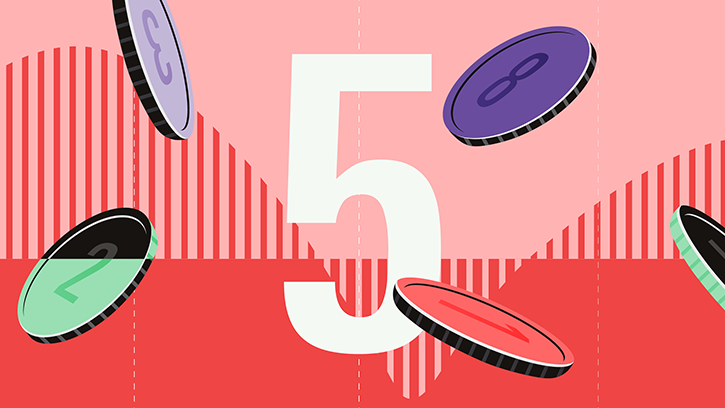At a recent Morningstar online conference for individual investors, viewers submitted loads of great questions, many of which we didn't have time to answer. Here we tackle some of these questions.
How often do you review the Star Ratings of stocks?
The number of stocks that carry a 5-star rating can potentially change every day. The Morningstar Rating for stocks is calculated by comparing the market price for a stock at the end of the trading day with our analyst's fair value estimate of the security. A stock that is trading at a deep discount to its intrinsic worth would be rated 5 stars, with the size of the discount needed to reach that highest rating depending on our analyst's assessment of the uncertainty surrounding the fair value estimate. The star rating can change on any given day due to a move in price, an adjustment to a fair value estimate or uncertainty rating by the analyst, or a combination of both.
What is the difference between a wide moat and a narrow moat?
Morningstar assigns an economic moat rating based on the degree to which a company has sustainable competitive advantages. All of the nearly 1,500 companies covered by Morningstar's equity analysts receive a moat rating of wide, narrow or no moat based on the degree to which these competitive advantages are present. Sources of economic moat include intangible assets, switching costs and network effect.
The distinction between companies with wide and narrow economic moats is one of duration rather than degree and is arguably less important than the distinction between those with moats and those without them. According to the methodology Morningstar uses to calculate moats, companies with wide moats are expected to earn excess returns on capital for at least 20 years, while those with narrow moats are expected to do so for at least 15 years. Or, to put it another way, a wide-moat company's sustainable competitive advantages are projected to last longer than those of a narrow-moat company.
It is easy to compare one fund's performance against other funds. How does one compare ETF performance against other ETFs in the same asset class?
Like traditional open-end funds (OEICs and Unit Trusts), exchange-traded funds are assigned Morningstar categories based on their holdings. Those that hold primarily large-cap growth stocks are assigned to the large-growth category; those that hold primarily short-term bonds are assigned to the short-term bond category; and so on. And, as with open-end funds, each ETF report on Morningstar.co.uk has a Performance tab that shows how the ETF stacks up against its ETF category peers on both a price and a net asset value, or NAV, basis.
Can a person be too diversified? Or is it just more safe?
"Too diversified" is a matter of opinion, I'd say. But at a minimum, your portfolio should be diversified enough to match your tolerance for risk.
Remember that there are different types of diversification. There's diversification across asset classes—owning stocks, bonds and real estate, for example; as well as diversification within an asset class—such as owning a variety of types of stocks rather than just a few types. In either case, the idea is to reduce the chances that poor performance in one part of your portfolio will sink the whole thing. So, for instance, if stocks are in a tailspin, the bonds in your portfolio are there to provide ballast. Likewise, if certain types of stocks are performing poorly, being diversified increases your chances of avoiding a full-blown portfolio meltdown. At the same time, being well diversified improves your odds of having at least one part of your portfolio performing well at all times. The idea is to spread out the risks in your portfolio rather than concentrating them in any one area.
Of course, the counter-argument is that a concentrated portfolio offers investors the chance to outperform a well-diversified portfolio by focusing only on strong performers. However, anyone who lived through the tech bubble knows how badly that can turn out. So, yes, a diversified portfolio is more "safe" in a sense. It means giving up the opportunity to shoot out the lights when it comes to performance but can do wonders for your peace of mind.
Can someone define what a full market cycle is?
While there's no set definition of what constitutes a full market cycle, the term is often used to refer to a length of time that includes both bull and bear markets. A bull market represents an environment in which an asset's price is increasing, while a bear market, at least according to one widely used definition, represents a drop in price of at least 20% from the high price.
By studying how an investment performs across a full market cycle, investors can get a picture of how it might perform in different future environments. For example, an investor researching a fund that he or she is considering as a long-term holding would be wise to consider its performance not only during the current bull market, which began six years ago, but in the bear market that preceded it as well. That way, he or she can get an indication as to whether the fund tends to perform well in some environments and worse in others.
Likewise, when analysing a company's shares, it can be useful to look at its performance across a full market cycle to see how it has fared. So-called cyclical stocks tend to do much better when the economy is buzzing but not so well when it's in the dumps, whereas defensive stocks tend to perform more consistently across various economic climates.





























